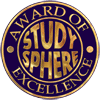
Innovative technology at highly competitive prices.
 |
ELIT Brand Electrochemical Sensors and Computer-based Instrumentation. Innovative technology at highly competitive prices. |
| HOME | PRODUCTS | TECHNICAL INFORMATION | SITE MAP | CONTACT US | PRICE LIST |
| Ion-Selective, pH, ORP, DO Electrodes | ISE/pH Ion Analysers | 4 & 8 Channel Analysers | Aqualyser Range | 'Multisens' Measuring Systems |

| Award of Excellence: June 2006 A Beginners Guide to Ion-Selective Electrode Measurements "has been selected as one of the best educational resources on the Web" by studysphere.com. - Last Update 14/10/2017. |
A Beginners Guide to Ion-Selective Electrode Measurements Chris C Rundle BSc, PhD. (Nico 2000 Ltd, London, UK.) Biography of author Any comments or suggestions for improvement? : Please Email nico2000ltd@gmail.com Printer-friendly PDF version ( 30 x A4 pages. Mainly text - only a few illustrations. ) CONTENTS 1) FOREWORD, RATIONALE AND ACKNOWLEDGEMENTS 2) INTRODUCTION TO ION
SELECTIVE ELECTRODES
3) BASIC THEORY OF ISE
MEASUREMENTS. 4) TYPES OF ION SELECTIVE
ELECTRODES 5) REFERENCE ELECTRODES 6) LIMITATIONS and CONSTRAINTS 7) CALIBRATION THEORY 8) CALIBRATION PRACTICE 9) MEASURING PROCEDURES 10) METHODS OF ANALYSIS 11) ACCURACY AND PRECISION
OF SAMPLE MEASUREMENTS. 12) TYPES OF MEASURING
DEVICES AND DATA PROCESSING 13) RECENT DEVELOPMENTS 14) RECENT RESEARCH INTO
CORRECTIONS FOR INTERFERING IONS APPENDICES - Available at www.nico2000.net. A) GLOSSARY OF TERMS AND CALCULATIONS B) INTERNET LINKS & BIBLIOGRAPHY C) OPERATING INSTRUCTIONS FOR ELIT ION-SELECTIVE ELECTRODES D) CATALOGUE OF NICO2000 ELECTROCHEMICAL PRODUCTS (pdf) . E) MS "POWER POINT" PRESENTATION F) DEMONSTRATION SOFTWARE FOR ELIT ION ANALYSERS
| |||||
Biography of the late Dr Chris C Rundle,
Nico 2000 Ltd, London, UK
 Go to Top of Page |
Chris Rundle worked for more than 25 years for the Natural Environment Research Council (British Geological Survey) as an Analytical Chemist / Geochronologist / Isotope Geochemist / Mass Spectrometrist. In the last few years at BGS a significant part of his work was the development of software for the automatic control of analysis, data acquisition and processing. His first degree in Chemistry and Geology was at the University of London (External joint honours BSc, 1968) and his PhD thesis was "The Chronology of Igneous Intrusion in the English Lake District", awarded by Birkbeck College, London, 1982. |
Number of visitors since new counter installed on 12 Oct. 2009